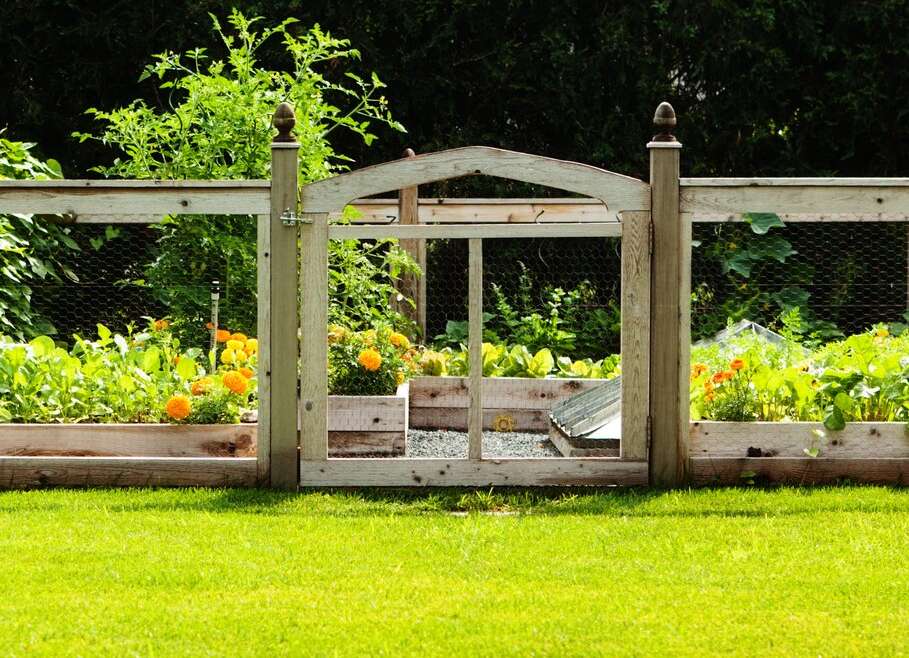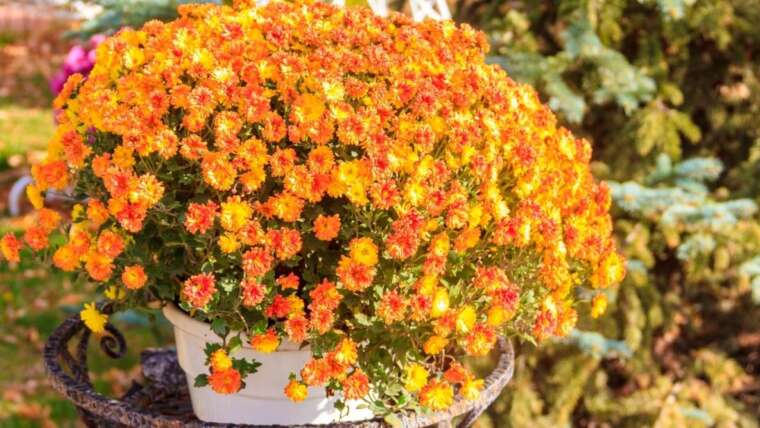Use these vegetable garden fence ideas to protect and enjoy your harvest. Your fresh vegetables are the prizes you receive after a season of hard work growing them. Don’t let the local wildlife take them from you.
Growing a vegetable garden can be rewarding and fun. All the work you put in results in fresh, healthy produce you can eat and share. Unfortunately, there are others who want your veggies, too. Local wildlife will take advantage and eat your harvest if they can get to it. Choose from among several vegetable garden fencing ideas to keep them out and to keep your vegetables for yourself.
Easy Vegetable Garden Fence Ideas
There are many different veg garden fence ideas to choose from. These are some options to get you thinking. Create whatever type of fencing or barrier works best for your garden and that thwarts the wildlife thieves in your area.
1. Try a DIY Fence
You don’t necessarily need a professional fence built by a fencing company to keep critters out. First, consider all the possible vegetable garden enclosure ideas that you can create yourself. One of the easiest DIY vegetable fence options is to use wooden posts and chicken wire. You can also use all kinds of leftover or scavenged materials to make a barrier, including bricks and stone, mesh, or even shipping pallets.
2. Keep Animals Out in Style With Slats
Try wooden slat fencing for an aesthetically pleasing option. Wooden slat fencing is trending in gardening because it offers a clean, modern look. The style works well for a garden barrier because it allows light through. If a wooden slat fence blocks too much light from your veggie bed, consider using it for just one side and using chicken wire or another more open option on the other three sides.
3. Set Your Garden in Stone
A stone wall offers a rustic or cottage-style option for keeping pests out of the vegetable bed. Use thin pieces of slate to create a barrier that is just high enough to keep most animals out while still allowing sunlight to get to the plants. If you’re not experienced working with rocks or stones, you might want to rely on a professional.
4. Hang Bird Netting
If birds are the greatest threat to your vegetables, netting is an easy and inexpensive solution. Simply place bird netting, which you can find in garden centers and online, over the vegetable bed or fruit trees. This prevents birds from landing and getting to the fruits and vegetables.
5. Grow a Living Willow Fence
Some fenced vegetable garden ideas don’t involve fences at all. A natural barrier can replace a fence made from wire, stone, or wood. For example, you can place willow rods in the ground to create a living willow fence. The rods will take root and grow into a dense barrier. Plant the rods at angles to each other to create a diamond pattern that will thwart most animals.
6. Plant Defensive Shrubs
Another idea for a living fence is to use shrubs. Use defensive shrubs with spines or thorns to discourage animals from trying to make their way through the growth. Some examples include yucca, barberry, roses, blackberry, honey locust, and bougainvillea.
7. Beautify a Fence With Flowers
If a real fence is the best option for protecting your vegetable patch, consider sprucing it up to make it look more natural and like part of the garden. Create a flowering fence with plants that climb up and over the fence, like climbing roses, jasmine, trumpet vine, or honeysuckle vine. These will also add an extra layer of protection from critters trying to get through the fence.
8. Don’t Mess Around With Deer
Keeping deer out of a vegetable bed is often more difficult than managing smaller pests. You’ll need a sturdy option, usually real deer fencing rather than a living fence. It should also be at least 8 to 10 feet (2.4 to 3.0 m) tall because deer can jump over fences. If deer are a serious problem in your area, consider electric fencing.
9. Go Electric
Sometimes, the problem is serious enough to warrant electric fencing. If you have a lot of wildlife that consistently gets into your vegetable patch, an electric fence might help. Check with your local government to be sure it’s allowed first, and avoid this option if there is a chance children might come into contact with it.
10. Ditch the Fence
You might not need physical barriers to keep animals out of your vegetable garden. Some non-fence options include repellant sprays, usually smells that deter specific pests, or shiny objects that move in the wind, like foil streamers that scare some animals.




